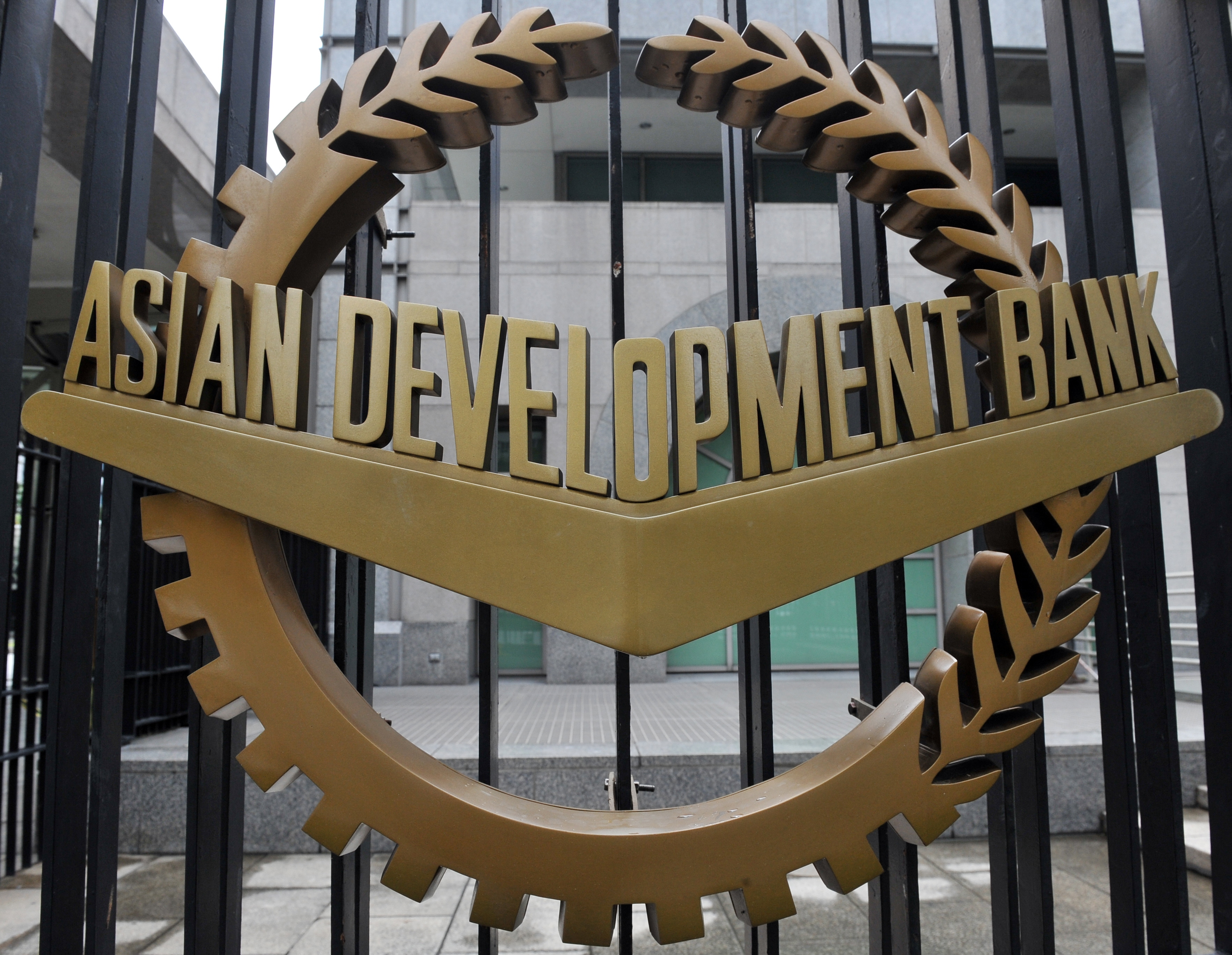ADB: PH has biggest pandemic-induced output gap in Asean-

A picture shows the logo of the Asian Development Bank (ADB) displayed outside its headquarters in Manila on September 2, 2010. Photo by TED ALJIBE / AFP
MANILA, Philippines—The gap between the Philippines’ economic growth amid the prolonged COVID-19 crisis and its pre-pandemic potential was the biggest in Asean-5 as jobs recovery remained weak, the Asian Development Bank (ADB) said on Thursday (Jan. 20).
The Manila-based ADB and think tank Moody’s Analytics also flagged risks from the current surge in COVID-19 cases due to the Omicron strain, which could add pressure to weak health systems like that in the Philippines.
Data presented by ADB senior economist James Villafuerte showed that before the COVID-19 pandemic, the Philippines’ economic growth averaged 6.4 percent from 2009 to 2019, the fastest in Asean-5 which also included Indonesia, Malaysia, Singapore and Thailand.
Initial findings of the ADB’s Southeast Asia COVID-19 country assessment report showed that despite expectations of gross domestic product (GDP) expansion of 5.1 percent in 2021 and 6 percent in 2022, the Philippines’ projected growth rates after its record 9.6-percent recession in 2020 had the biggest deviations to pre-pandemic trends in Asean-5.
The forecast output level in 2021 was 16.1-percent below pre-pandemic potential, while this year’s GDP would be 16.4-percent smaller, ADB estimates showed.
Across Asean-5, total GDP this year was expected to be 10.8-percent lower than pre-pandemic potential. While all five countries’ output would be below trend, the four others had been estimated to have smaller deviations than the Philippines’: Indonesia, 9.1 percent; Malaysia, 11.3 percent; Singapore, 8.9 percent; and Thailand, 11.4 percent.
ADB scenario analyses showed that across Southeast Asia, projected growth rates for 2022 were sensitive to COVID-19 behavior and health policy interventions.
In the case of the Philippines, a worse COVID-19 outbreak could slash GDP growth by 0.4 percentage point (ppt), while an additional 1.1 ppt could be added to this year’s growth rate if health policies slowed infections.
“With the continuing spread of the Omicron variant, there is a pressing concern that the expected economic recovery in 2022 will actually be stalled, with the emergence of the new wave of COVID-19 infections that we’re seeing now in January,” Villafuerte said.
In a separate report, Stephen Cochrane, Moody’s Analytics chief Asia-Pacific economist, noted that “so far, steep surges of COVID-19 cases driven by the Omicron wave are evident in Australia and the Philippines.”
In the Philippines, Metro Manila and areas accounting for over half of the economy had been placed under stricter alert level 3 restrictions until the end of January. “Domestic demand would be hurt first by any return to movement restrictions, and Google mobility data indicate that this is beginning to be felt in the Philippines and in Thailand, where declines in mobility for retail and recreational purposes have fallen the most sharply in mid-January,” Cochrane said.
Cochrane nonetheless said that the slower mobility this month was still better than in the third quarter of 2021 when the Philippines and Thailand experienced their Delta waves.
For Cochrane, “risks of further domestic movement restrictions that could hobble near-term growth are focused in Indonesia and the Philippines, where public health services are less expansive and vaccination rates remain relatively low.”
Moody’s Analytics projected the Philippines’ GDP growth at 4.7 percent in 2021 and 5.6 percent this year. Its forecasts were below the government’s targets of 5 to 5.5 percent in 2021 and 7 to 9 percent in 2022.
The think tank also projected continuing elevated unemployment rates of 7.7 percent in end-2021 and 6.9 percent this year.
The preliminary ADB report pointed to a “pandemic shock” in the Philippines’ job market, citing “long-term negative impacts on employment even after the economy has started to rebound.”
Villafuerte noted that unemployment remained above the long-term trend — the pandemic-low jobless rate of 6.5 percent in November 2021 remained above the average of 5.5 percent pre-pandemic.
It did not help that workers — especially among more vulnerable sectors like youth, women, low-skilled and the elderly — had been shifting to mostly informal or “precarious” jobs, Villafuerte said.
ADB senior regional cooperation officer Dulce Zara said scarring in the Philippines’ labor market can happen in three ways:
- An elevated number of job seekers, who had lost their jobs due to the pandemic plus new entrants after they graduated or dropped out of school
- Reallocation of job losses, especially in physical contact-dependent sectors, which may lead to more skills mismatches
- Digital skills entailed by new jobs under work-from-home arrangements which may not be accessible to the current crop of workers.